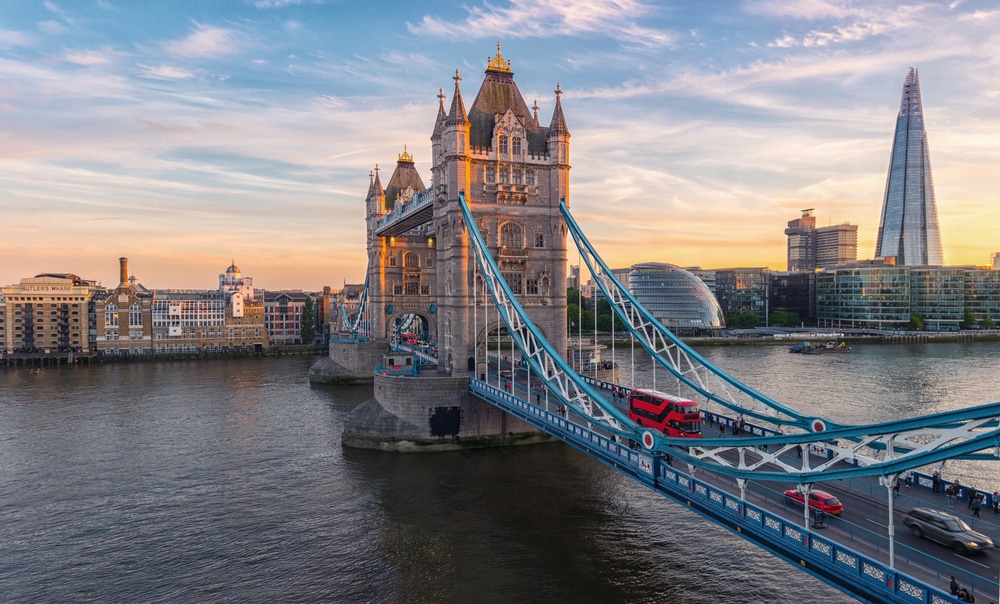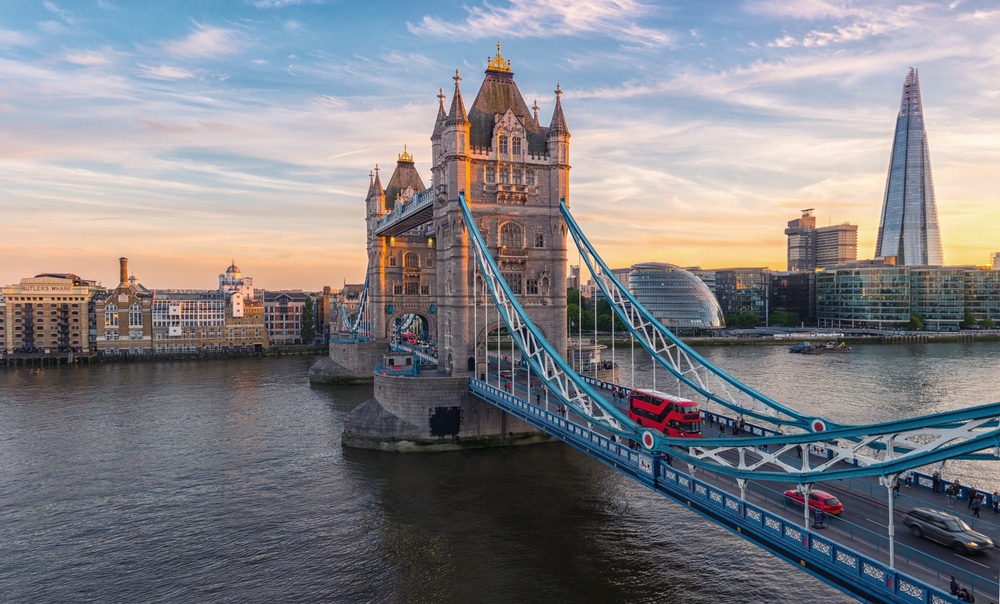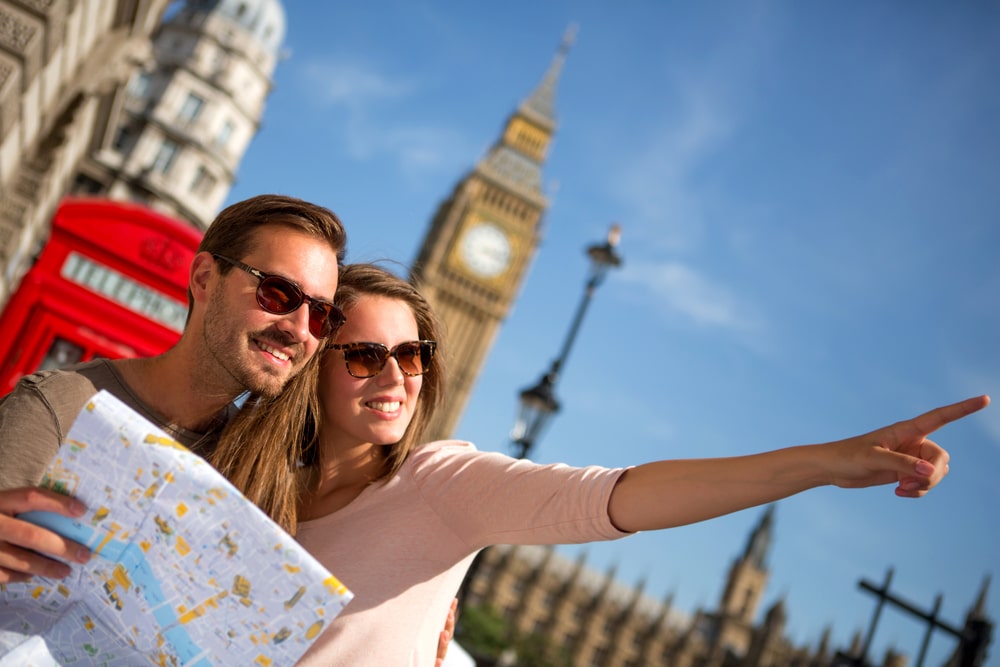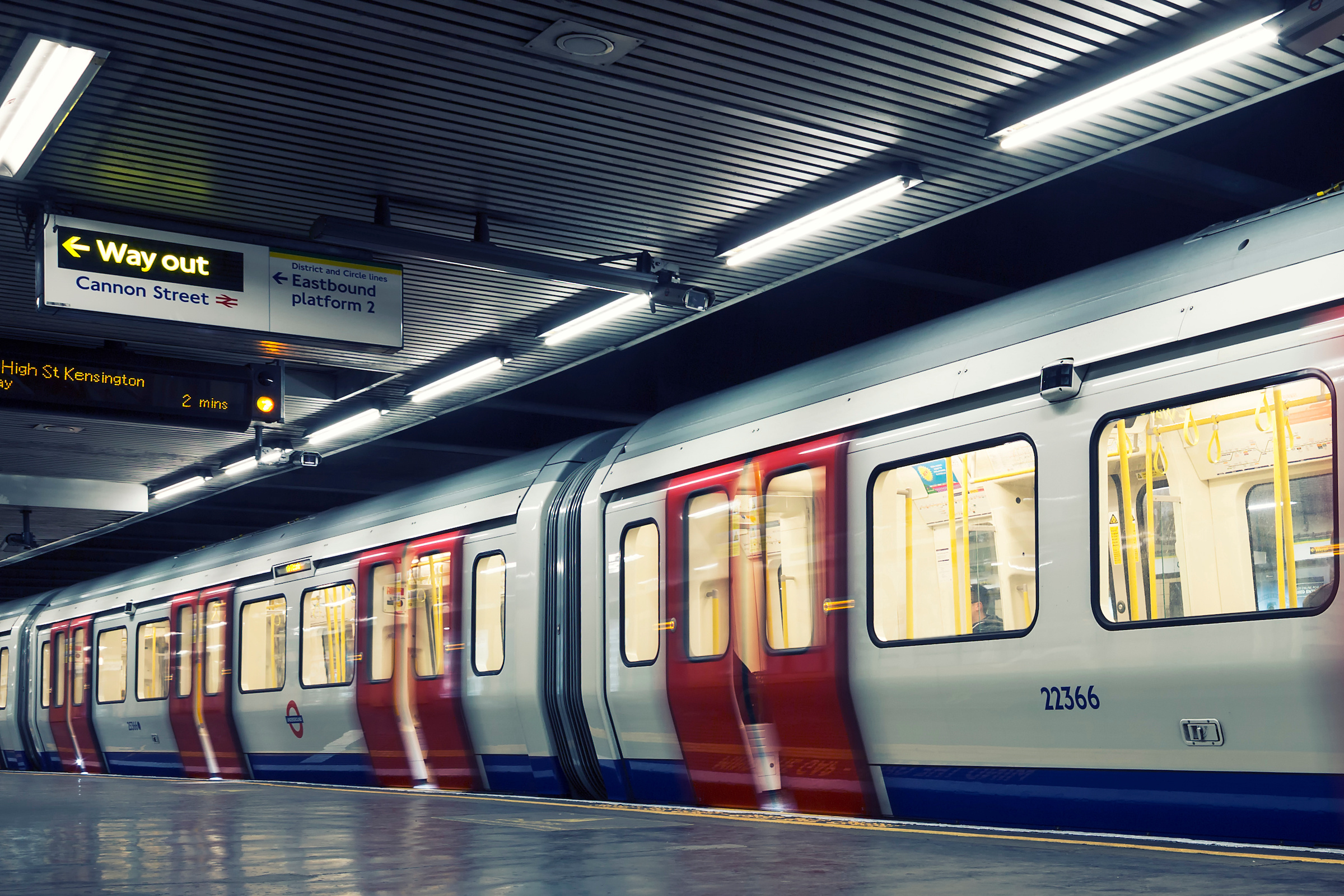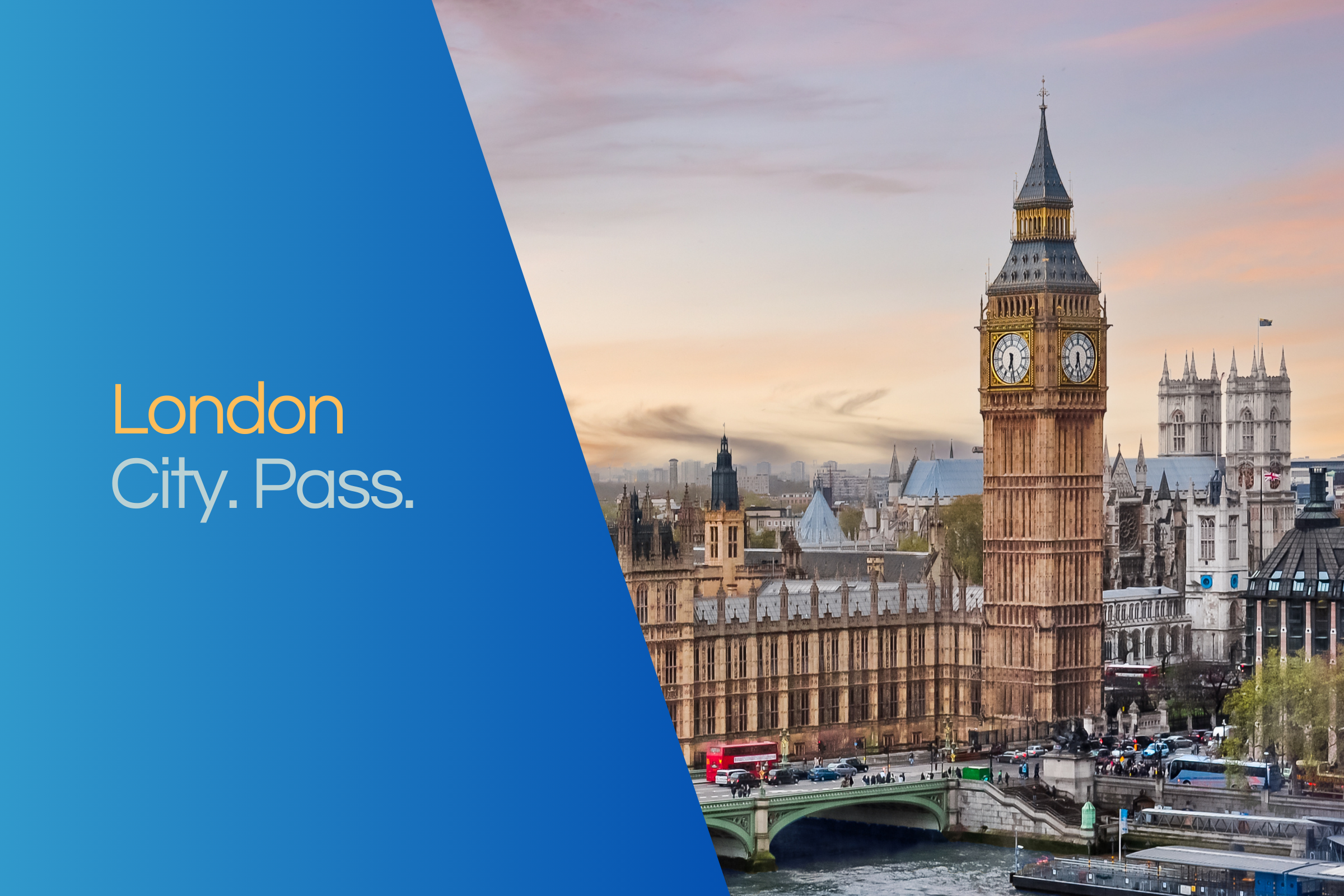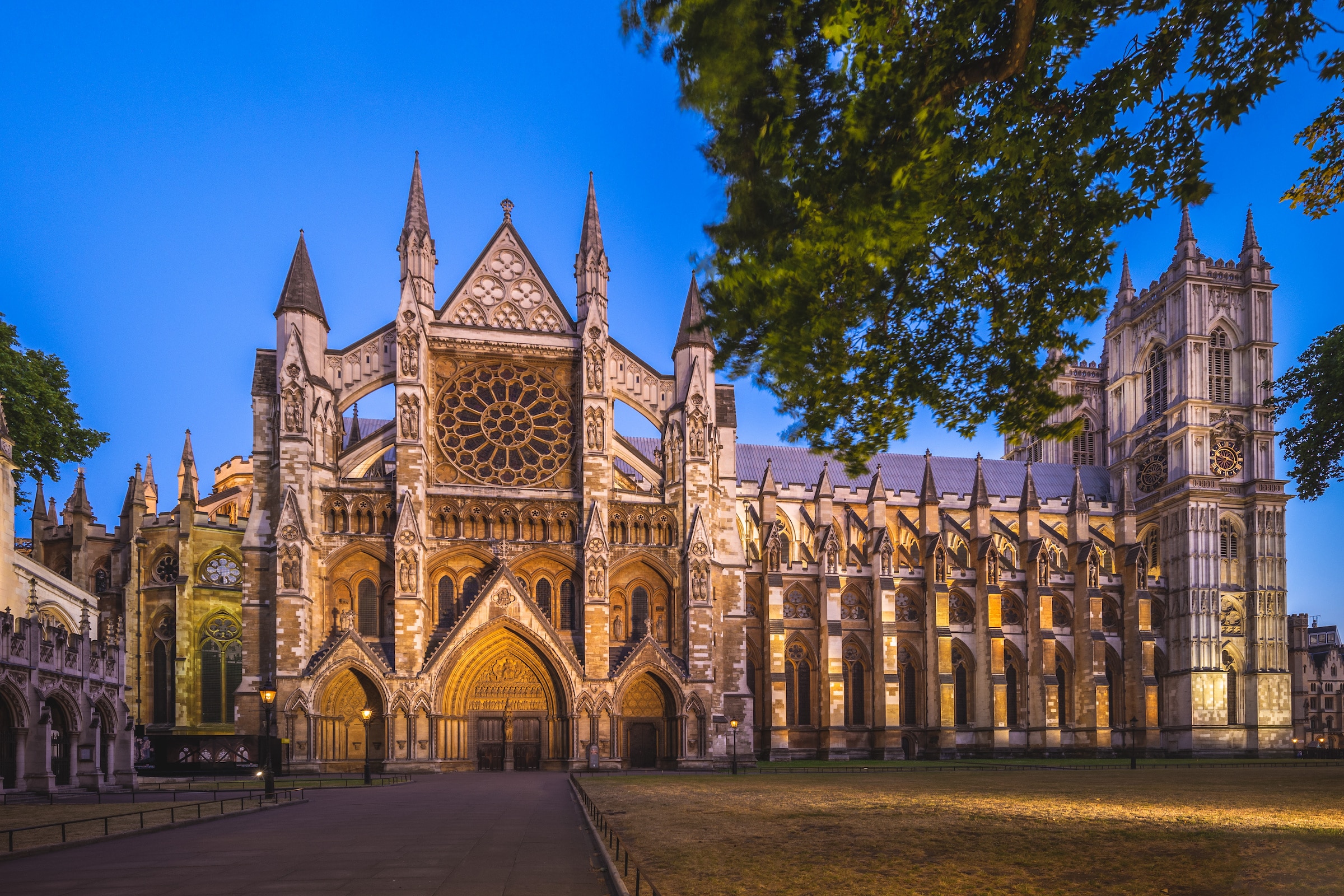- Home ›
- United Kingdom ›
- London
The Tower Bridge is one of the most famous landmarks of London and also one of the most famous bridges in the world. On a length of 244 metres, the famous bascule bridge spans the Thames. The bridge, which was handed over to its purpose in the year 1894, got its name from the Tower of London, which is located in the immediate vicinity of the Tower Bridge.
In the late 19th century, traffic in London's docklands increased dramatically and a bridge construction became necessary. More than 50 proposals were submitted for the construction of Tower Bridge. The construction of a conventional bridge was out of the question, as it was necessary to continue to allow shipping traffic. It took more than ten years until all projects were examined and the proposal of city architect Horace Jones, himself a member of the jury at that time, was approved.
The foundation stone for the structure was laid in June 1886, and 432 workers from five firms were involved in the construction of the bridge. Two 70,000 ton piers had to be sunk into the Thames to provide support for the massive structure. The towers and the footbridges are made of a steel construction. For this purpose, 11,000 tons of material were used. To improve the appearance of the bridge, the towers were clad in Portland limestone. The Prince of Wales and later King Edward VII opened the Tower Bridge on June 30, 1894. On the occasion of the silver jubilee of Queen Elizabeth II, the metal parts of the Tower Bridge were painted in the British national colours. The red-white-blue colour scheme has been retained to this day.
A special feature of the Tower Bridge is the combination of a suspension bridge and a bascule bridge. The striking eye-catcher are the two 65 metres high bridge towers. There is a pedestrian crossing between the two towers. So that large ships can still pass the Thames, the bascules of Tower Bridge can be folded up to an angle of 86 degrees within two minutes.
After the opening of the Tower Bridge, the footbridges became an attraction for pickpockets and prostitutes. As a result, the bridges were closed to public use in 1910. It was not until the early 1980s that the footbridges were reopened to the public. Today, they house a museum and a popular viewpoint of the London skyline. The bridge museum houses numerous documents relating to the construction and history of the famous bridge. In order to reach the footbridges, tourists first have to climb the stairs inside the towers, overcoming a height difference of 34 metres. As a special attraction, an eleven-meter-long section of the footbridge was equipped with a glass floor in 2014.
The bascule bridge works with the help of a hydraulic system, which was initially based on water pressure. Two piston steam engines pumped water under pressure into huge pressure tanks at that time. The fact that the roadways could be folded up in just a few minutes was considered a masterpiece of technical progress in the late 19th century. It was not until the 1970s that the switch was made from water to oil hydraulics. Even though electric pumps are used today, the original engine house with the steam engines, which are no longer in operation, can be visited by tourists.
The Tower Bridge is not always completely unfolded but only as far as it is necessary for the respective ship that wants to pass the passage. Only in case of big cruise ships, the complete opening is necessary. On most smaller excursion ships it is not necessary to open the bascules. This is the reason why the folding up of the Tower Bridge can be observed less and less by tourists. Today, the numerous spectators still witness the spectacle approximately 1,000 times a year.
In rare cases, the Tower Bridge is also opened on official occasions, as happened in June 2012, on the occasion of the 60th throne jubilee of Queen Elisabeth II. The Tower Bridge belongs to the inner ring road of London and is therefore very frequented. Every day, approximately 40,000 vehicles pass the bridge. The driving on the bridge is not subject to a toll. Those who drive on the Tower Bridge have to keep to a speed limit of 32 km/h.
